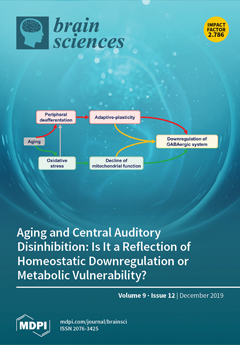Neuronal ischemia results in chloride gradient alterations which impact the excitatory–inhibitory balance, volume regulation, and neuronal survival. Thus, the Na
+/K
+/Cl
− co-transporter (NKCC1), the K
+/ Cl
− co-transporter (KCC2), and the gamma-aminobutyric acid A (GABA
A)
[...] Read more.
Neuronal ischemia results in chloride gradient alterations which impact the excitatory–inhibitory balance, volume regulation, and neuronal survival. Thus, the Na
+/K
+/Cl
− co-transporter (NKCC1), the K
+/ Cl
− co-transporter (KCC2), and the gamma-aminobutyric acid A (GABA
A) receptor may represent therapeutic targets in stroke, but a time-dependent effect on neuronal viability could influence the outcome. We, therefore, successively blocked NKCC1, KCC2, and GABA
A (with bumetanide, DIOA, and gabazine, respectively) or activated GABA
A (with isoguvacine) either during or after oxygen-glucose deprivation (OGD). Primary hippocampal cultures were exposed to a 2-h OGD or sham normoxia treatment, and viability was determined using the resazurin assay. Neuronal viability was significantly reduced after OGD, and was further decreased by DIOA treatment applied during OGD (
p < 0.01) and by gabazine applied after OGD (
p < 0.05). Bumetanide treatment during OGD increased viability (
p < 0.05), while isoguvacine applied either during or after OGD did not influence viability. Our data suggests that NKCC1 and KCC2 function has an important impact on neuronal viability during the acute ischemic episode, while the GABA
A receptor plays a role during the subsequent recovery period. These findings suggest that pharmacological modulation of transmembrane chloride transport could be a promising approach during stroke and highlight the importance of the timing of treatment application in relation to ischemia-reoxygenation.
Full article






